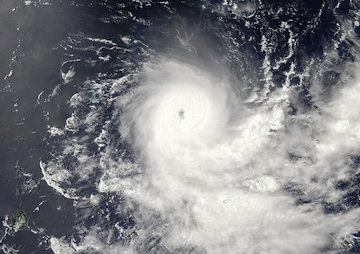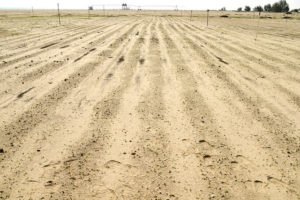Worse Cyclones Will Hit East Asia
Climate scientists have found indications that Asian tropical cyclones are not only getting stronger but are also likelier to strike east Asia -- China, Japan and Korea. NASA Goddard Photo and Video (CC BY 2.0)
NASA Goddard Photo and Video (CC BY 2.0)
By Kieran Cooke, Climate News NetworkThis piece first appeared at Climate News Network.
LONDON — It will be of little comfort to people in the southern and central Philippines repeatedly hit by tropical cyclones over the years, but a new study indicates that storm patterns might be shifting northwards.
The study, by a team of scientists at Seoul National University and other South Korean scientific institutions, looks at tropical cyclone activity across the north-west Pacific between 1977 and 2010.
Researchers found that increasing sea surface temperatures likely due to climate change, together with changes in atmospheric circulation patterns, have led to a significant increase in the intensity of tropical cyclones hitting the east Asia region over the 30-year period.
“Noticeable increases of greenhouse gases over the globe could influence rising sea surface temperature and change large-scale atmospheric circulation in the western North Pacific, which could enhance the intensity of tropical cyclones hitting land over east Asia”, says Professor Chang-Hoi Ho, one of the study’s authors.
Intensity changes
The study, which appears in the journal Environmental Research Letters, analyses five separate sets of data relating to the growth and behaviour of tropical cyclones across the north-west Pacific.
It found that the area of maximum storm intensity had shifted both westward and northward: while the intensity of tropical cyclones had lessened somewhat in areas of south-east Asia it had increased significantly in east Asia – particularly in coastal regions of central China and of Japan and around the Korean peninsula.
The study found that cyclones were tending to build up around the northern Philippines and track along coastal areas from Vietnam northwards, gaining energy along the way.
The researchers say a significant factor behind the alteration in the intensity and direction of tropical cyclones is a change in what’s called the Walker circulation – an ocean-based atmospheric circulation system over the Pacific.
Sea temperature difference
The Walker circulation strengthens as the difference between sea temperatures in the warmer western Pacific and the colder central-eastern Pacific grows more marked: the result is that wind flows associated with the Walker circulation drive tropical cyclones towards the north-eastern coast of Asia, where they reach maximum intensity.
“This change in large-scale climatic fields suggests that the principal region in which many tropical cyclones attain peak intensity during their lifetime might have been translocated”, says the study.
Cyclone Haiyan ravaged a large part of the central coastline of the eastern Philippines. However, the study found that over the 30-year period analysed, tropical cyclone activity in seas off the east Philippines coast had decreased while “the maximum intensity has shifted toward east Asia and intensified landfall intensity.”
That’s bad news for millions of coastal dwellers in central and northern China, Japan and on the Korean peninsula. More catastrophic tropical cyclones will strike east Asia in future than ever before, says the study.
Your support matters…Independent journalism is under threat and overshadowed by heavily funded mainstream media.
You can help level the playing field. Become a member.
Your tax-deductible contribution keeps us digging beneath the headlines to give you thought-provoking, investigative reporting and analysis that unearths what's really happening- without compromise.
Give today to support our courageous, independent journalists.






You need to be a supporter to comment.
There are currently no responses to this article.
Be the first to respond.